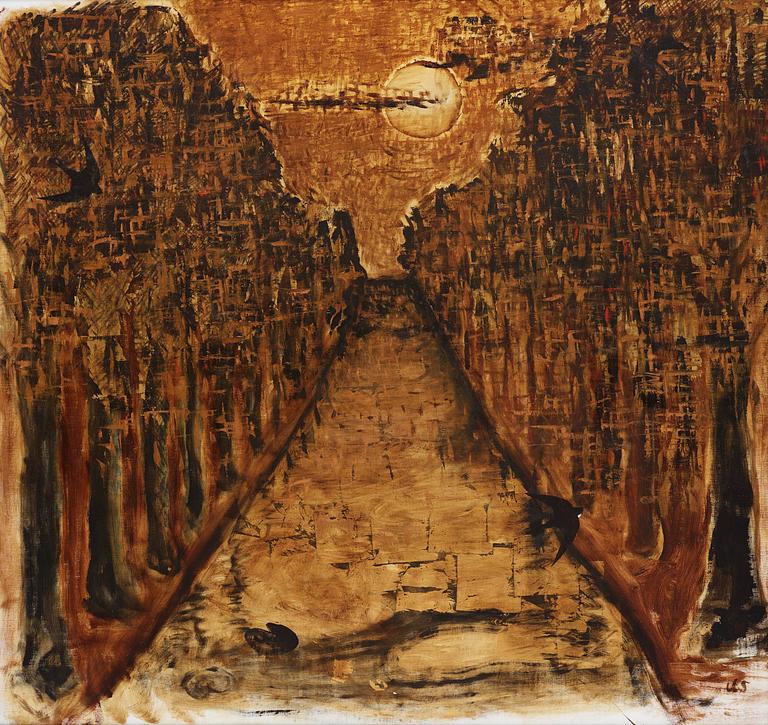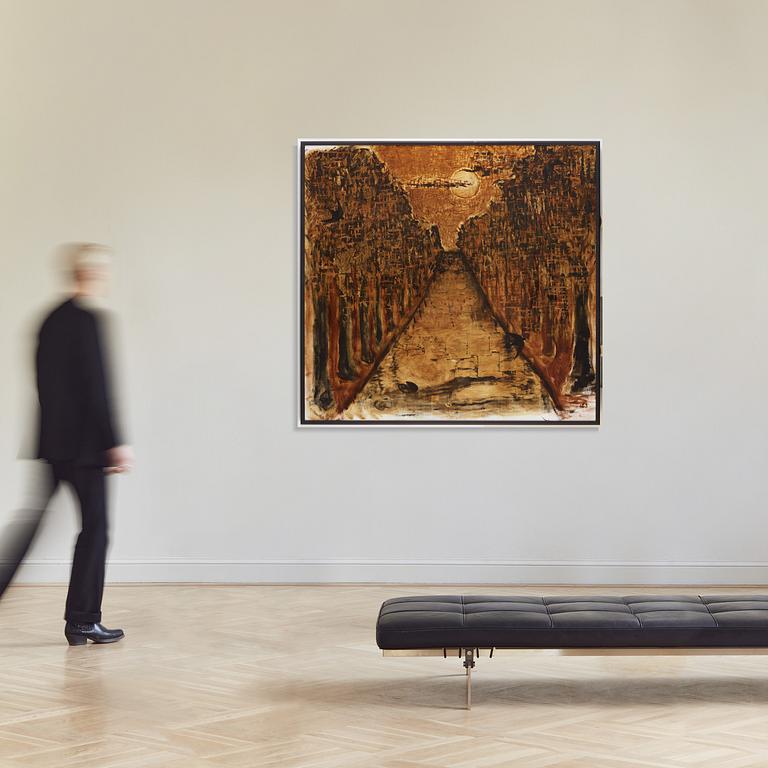Ulrik Samuelson
"Sunset Boulevard II"
Signed Ulrik Samuelson and dated 2013 on the stretcher verso. Also signed US verso. Canvas 185 x 195 cm.
Provenance
Galleri Olsson, Stockholm.
Sivert Oldenvi Collection, Stockholm.
Exhibitions
Gallery Olsson, Stockholm, "Jubilate Max", 5 November - 1 December 2013.
More information
Ulrik Samuelson studied at Konstfack and the Royal Institute of Art from 1957 to 1962. He later became a professor at the Royal Institute of Art from 1970 to 1978. Samuelson is a recognised representative of the radical artist generation of the 1960s. Nydada, pop, conceptually orientated art and minimalism marked out new paths for the desire to circumvent the conventions and expressions of traditional art. Samuelson's artistic hallmark is refined surfaces, silk, mahogany, shiny black plastic, gold, marble all in exquisite material treatment. Many of his works are symbolically charged, and the images and installations revolve around the contradiction between death and sexuality, desire and decay. His largest work is the decoration of Kungsträdgården underground station, where he reflects history, the present and archaeology in a rock room. In 1991 he was awarded the Prince Eugen Medal and in 1998 first prize in the Carnegie Art Award.
Mårten Castenfors writes:
"Of the three (Björn Lövin, Sivert Lindblom, and Ulrik Samuelson, eds. note), Ulrik Samuelson stands out through a passionate and erotic relationship with subject matter and materials. Samuelson's works are like unabashed orgies in glossy black and silky pink, in water lilies and the marbled elegance from which they originate, with a scent of hay and a mirror-like iron-rich Swedish lake. [...].
During the 1990s Samuelson returned to easel painting, at a time when painting as a form of expression was dismissed by a younger postmodern generation. With exhibitions like 'Blick stilla' in 1993 and 'Enskild väg' in 1996 at Galerie Aronowitsch, Samuelson cleverly emphasized the rich potential of expressive landscape painting. However, it was not ordinary landscape painting that was presented, but rather a more conceptual version where the subjects were either enticingly abstract or lush through a murky asphalt-brown tone, reminiscent of the confined salon painting of the 19th century. At the same time, these paintings engaged in an intense dialogue with Swedish and international art history; in his works, Samuelson spoke as warmly and directly with Kasimir Malevich as with Edvard Munch, Prince Eugen, and Bruno Liljefors. While subtly commenting on the contemporary art debate from his position slightly outside the art world, Samuelson also introduced ambiguous texts in his works, akin to his painter colleague Torsten Andersson. With these contrasting verses, Samuelson achieved further tension in the works, effectively breaking the stillness that seemed to prevail in nature and transitioning into a compelling mental activity. Samuelson's paintings, like his installations, were both cryptic and captivating - constantly inviting visual and intellectual contemplation." (Mårten Castenfors, "Swedish Art of the 20th Century, Part 3, 1970-2000", 2001, pages 49-52).





















































